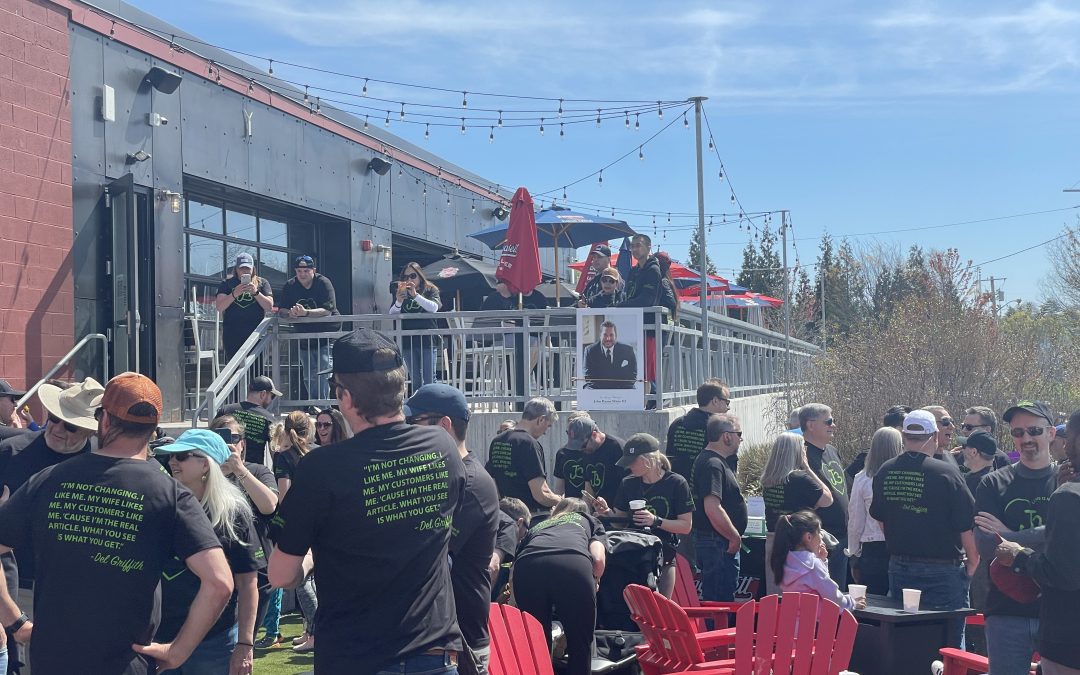Public Safety Buildings Consolidate Functions for Greater Efficiency & Responsiveness
Public safety complexes (PSC) are the nerve centers for municipalities and their citizens. As contained within a PSC, an Emergency Communications Center’s (ECC) ability to quickly process incoming calls of an emergency nature and rapidly dispatch public safety resources can be a matter of life and death. In community-wide emergencies, whether natural or man-made, an emergency operating center plays a critical role in assessing the nature and extent of a disaster or unfolding threat and in coordinating/marshaling local, state and even federal responses to protect the public.
Obviously, because there are many agencies involved which have to be coordinated, the more centralized the functions of a PSC/ECC can be, right down to physical co-location and co-sharing of services within the same complex, the more efficient and effective this vital public service can become.

The Tallahassee-Leon County PSC Example
A model for successful integration of a PSC-ECC along with other functions (EMS, fire department, transportation management) into a single complex with integrated functions is the Tallahassee-Leon County Public Safety Complex in Tallahassee, FL. This $47 million complex, which opened in the spring of 2013, combines both city of Tallahassee and Leon County public safety communication functions along with an emergency operations center and other emergency functions under a single cohesive emergency service operating structure. The city and county share the costs of operating the facility. An award winning project (American Public Works Association and Associated Builders’ Building Contractors awards), the Leon County PSC is seen as a benchmark for how mission critical facilities can be consolidated and their functions seamlessly integrated to better serve the public.
The project was the vision of the city of Tallahassee and County Commissions. It came together as a result of years of hard work and leadership on the part of the two political subdivisions, with the sole objective of improving the delivery of emergency services to the community. Architect Carl Morgan, a longtime Leon County facility and construction manager, oversaw the programming, design and construction of the facility in a multi-year project he likens to a labor of love.
According to Carl Morgan, the Tallahassee-Leon County PSC provided “the opportunity to build a state-of-the-art public safety building specifically designed to facilitate the collaboration of city and county agencies, to include the county sheriff’s department, and to integrate cutting edge technologies to make the facility energy efficient, sustainable and able to smoothly handle cooling needs with changing occupancy rates.”

Occupancy Levels Demand Flexibility in Controlling Changing Loads
Because the building has changing occupancy levels based on workday staffing, evening and weekends, and full activation in an exercise or real-situation mode, design and selection of the HVAC system was a major first-task. “As a mission critical facility operating 24-7, 365 days a year, there were some very unique challenges, and especially mechanical challenges,” says Morgan.
One of those mechanical challenges was that the building had to to be able to deal effectively with a very broad heat load extraction. To illustrate, whereas the building has a normal daytime occupancy of around 150 people, and an overnight average occupancy of 35-40, the occupancy rate can balloon quickly to up to 400 in the event of activation of the EOC.
Considering this operational fact, Carl says, “The building started with the engineering. With such varying loads and heat extraction requirements, you can see the challenges that the engineering team faced in having to design systems to respond to all the load conditions and requirements.”
H2 Engineering of Tallahassee, the prime engineering consultant to the architectural design firm of Clemons, Rutherford & Associates, a Tallahassee-based firm, was elected as the consulting engineers on the project. In business since 1977 and with approximately 20 employees currently, H2 Engineering focuses on K-12 and university, correctional and EOC facilities. Daniel Henderson, P.E. was lead engineer on the Leon County PSC backed up by H2 Engineering President Matt Scaringe, P.E., a part-owner.

The Hydronic HVAC System
“The HVAC system for the building is a chilled water system,” says Henderson, “with 3 250-ton Trane supplied centrifugal chillers (CenTraVac™ chillers) piped in a variable primary flow. It uses ground source condenser wells (bored down to 450 ft.) for cooling water. It has three primary chilled water pumps (Taco FI Series) that pump water throughout the facility. It also has 2 boilers (Harsco Patterson Kelley Modu-Fire) in a primary-secondary arrangement with both primary dedicated pumps and secondary distribution pumps. Everything is redundant so that a failure of any single piece of equipment will not render the system inoperable.”
“The way we deal with the varying loads,” explains Daniel Henderson, “is with the three Trane chillers piped in series: the first chiller handles the everyday load; when we go into activation mode we then need two chillers, and the third is our N+1 redundant unit.”

Use of Chilled Beams Provides Many Benefits
Separate from the facility’s Data Center, approximately 90% of the occupied space of the building is quietly cooled by a chilled beam system (Truk active chilled beams supported by Taco LoadMatch circulators and LOFlo mixing blocks). There are over 300 chilled beams throughout the building. The chilled beams come with their own controls and are kept at 2°F above dew point, with air handlers (Daikin McQuay) providing dry air to the beams in what is essentially a constant volume system that supplies fresh air to the building and removes the latent heat from the exterior air.
Use of a chilled beam system allowed the engineers to reduce the size of the mechanical rooms and the air handlers. The beams have also helped reduce energy consumption, which continues to drop each month, because there is less air to move around the spaces. “It’s much cheaper to move water than air,” says Carl Morgan. “And we don’t have a hot-cold complaint log for the building because we don’t have hot-cold complaints.”

However, chilled beams were not originally intended for use in the Leon County PSC. “Early on in the design phase we looked at an under-floor air distribution system in the hopes that it would provide us with long-term flexibility for the various space utilizations,” Morgan explains. “But the more we worked that with the H2 Engineering team, the more we realized that such a system did not provide the functionality and flexibility we required. We then looked at other alternatives including chilled beams. It is a system I was not 100% acquainted with, as I had not used them before.”
Few building owners, engineers or contractors in the Tallahassee area had worked with child beams at that time. “The use of chilled beams for a public building here in the South is pretty unique,” says Jay Smith II, Vice President of Midway, FL Ajax Building Corp., the construction at risk management firm on the project. It’s fairly new technology here and we’re just starting to see it employed, as in the Leon County PSC project and the University of Florida’s College of Journalism building. People have concern about using chilled beams because of the our climate’s high humidity factor, which can produce sweating and potential leaks.”

Matt Scaringe’s firm had experience with chilled beams and had suggested them to Carl Morgan. “One of concerns with chilled beams, especially in a climate like we have here, is condensation forming on the surface of the beams. It’s a real concern and requires us as engineers to properly design the system and for the owner to properly operate the system. One of the things we rely on is using the Taco LOFlo injection pumps to make sure we’re maintaining a water temperature above the dew point in the space and using highly accurate dew point sensors throughout the space to make sure we’re measuring it correctly.”
Taco’s LoadMatch circulators combined with its LOFlo injection mixing block (LMB) work very well with radiant cooling systems employing chilled beams. Quiet and efficient LoadMatch circulators are self-balancing and eliminate the need for most balancing valves and energy-consuming control valves. The LOFlo mixing block is a complete injection system in one unit that controls individual zones at the lowest possible flow rate by maintaining the highest possible supply water temperatures in cooling applications. The LMB automatically provides only the flow and temperature of water needed to satisfy the zone load at any given time.

Installation of the Taco LoadMatch-LOFlo system with chilled beams proved to be an easy install. “This was a first time use of these components for our firm,” says Bobby Kelly, President of Kelly Brothers, the installing contractor on the project. “Chilled beams are easy to install, save space above the ceiling and are very energy efficient.”
Use of chilled beams instead of the first proposed under floor air distribution system also allowed for flexible use of the floor space as work stations supplied with electricity from the floor can now be rearranged and moved at will, depending on the need. “Using chilled beams eliminated having 8-10 air highways under the floor where plugs couldn’t be installed,” explains Henderson.
“Overhead chilled beams in the spaces solved our concerns over flexibility, especially with regard to turning the work stations over the life of the building,” adds Scaringe. “We felt that chilled beams were the right application for this project and it’s turned out to be a great success. This is very comfortable environment for the occupants.”

The Mechanical Room
Because engineering considerations came first in terms of design, the mechanical room space and layout were a priority. The main mechanical room in the PSC affords ample space for equipment access for service and even expansion if needed. “Most times mechanical rooms are very limited,” says Kelly, “and we struggle to fit everything in. In this case there’s plenty of room for maintenance after the fact and room for any future expansion that might occur.”
Taco FI series pumps for primary and secondary pumping functions come with variable speed drives (Danfoss). “Use of variable speed drives on the Taco pumps (47 total) allow us to handle the varying load conditions by varying the water flow to each piece of equipment,” says Henderson.
Matt Scaringe adds: “One of the other applications we had for the pumps on this project is that we eliminated control valves on our cooling coils and actually pump to every coil in the building. This way we can vary the speed with the drives on those pumps to match the temperature conditions we need coming off the coils. It also allowed us to eliminate the pressure drops in the system typically associated with control valves on cooling coils.”
“The building itself is designed with a complete variable speed system. Each piece of mechanical equipment works no harder than it actually has to,” says Morgan.
Additional Taco equipment in the mechanical room includes frame-mounted 1900 pumps, KV vertical pumps for AHUs, 4900 Series air/dirt separators, multi-purpose valves and expansion tanks – equipment typically seen in Southeastern U.S. mechanical rooms where hydronics dominates.

There are even extra Taco pumps stored on-site, courtesy of Florida Hydronics, Taco’s commercial rep agency for the Sunshine State. “At H2 Engineering,” Scaringe points out, “we’ve been working with Taco for over 25 years, specifically with Florida Hydronics. Together, they’ve always provided amazing customer service. They really come into the job to assist us resolve issues, helping us through the design process, making sure that our hydronic systems are designed and built the way we intend them to be.”
Using a State-of-the-Art Design Tool
The hydronic system design for the building was laid out using Taco’s Hydronic Systems Solution® (HS2) software program, which H2 Engineering is well acquainted with, having been one of the engineering firms in the country to use it. “We used the HS2 software to design all the hydronic systems in the building,” says Daniel Henderson. “This project was the largest HS2 file yet created.”

“HS2,” adds Scaringe,”has been a real benefit for providing design support, schematics and other essentials in terms of what we’re trying to communicate to the contractor and the owner so they understand the system we’re providing.”
Conclusion
Carl Morgan spends a bit of his time each week showing off the facility and its features to fellow public safety professionals, and he’s proud of what the new facility delivers to the citizens of Tallahassee and Leon County in terms of fast and efficient public safety response, and also what the building means to the future of public safety complex design and construction.
“Building a mission critical facility requires taking into account a lot of different considerations to make it successful: from the design to the construction, and then at the end of the day how do the occupants use the facility. Each agency in this building is acoustically isolated but yet they’re all connected via the common use spaces, the common cores. There’s a tremendous amount of glass in the building to give them a sense of visual connections with their counterparts. As the agencies work together they become more like a collective than independent functioning entities occupying the same space, and that integration holds great promise for our ability to provide the very best emergency management services to our community.
Information supplied by Leon County Dept. of Emergency Services, Dept. of Facilities Management and Construction and Taco, Inc.



